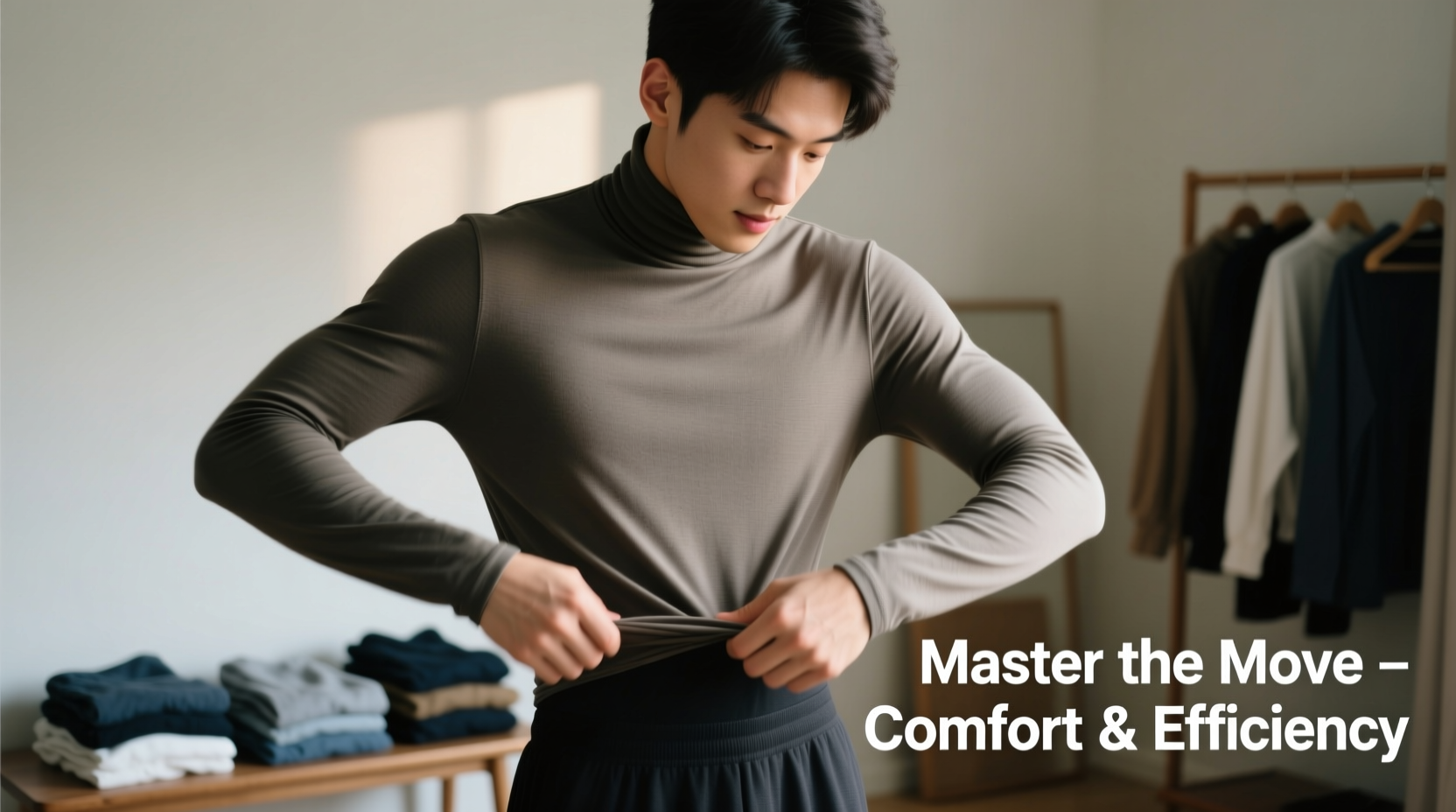Dressing is a fundamental daily activity, yet few people consider how they do it. For many, especially those with mobility limitations, chronic pain, or simply busy mornings, inefficient dressing habits can lead to discomfort, wasted time, or even injury. With thoughtful technique, however, putting on clothes can become smoother, faster, and less taxing on the body. By integrating ergonomic principles, adaptive tools, and mindful routines, anyone can master this essential task with greater ease and confidence.
The Importance of Efficient Dressing

Efficient dressing isn’t just about speed—it’s about preserving energy, reducing physical strain, and maintaining independence. Poor posture or awkward movements during dressing can contribute to back pain, shoulder strain, or balance issues. This is particularly critical for older adults, individuals recovering from surgery, or those managing conditions like arthritis or Parkinson’s disease. Even for healthy individuals, refining your dressing process can free up valuable minutes each morning and reduce mental fatigue.
“Small adjustments in how you dress can have a significant impact on comfort and long-term joint health.” — Dr. Lena Patel, Occupational Therapist & Mobility Specialist
Step-by-Step Guide to Comfortable Dressing
Follow this structured approach to streamline your routine while minimizing effort and maximizing comfort:
- Prepare your clothing the night before. Lay out complete outfits in the order you’ll put them on. This reduces decision fatigue and prevents frantic searching in the morning.
- Sit down when possible. Use a sturdy chair or bed edge to maintain balance and reduce lower back strain. Sitting allows better control and leverage when pulling on pants or socks.
- Dress the weaker or more limited side first. If one side of your body has reduced mobility, put clothing on that side first. Removing clothes? Take them off the stronger side first.
- Use smooth, sequential motions. Avoid jerking or tugging. Instead, roll pants up slightly at the ankle and use a steady upward motion. For shirts, insert one arm fully before moving to the next.
- Finish with accessories and outer layers. Belts, jackets, and shoes should be the final steps to avoid readjustments mid-process.
Do’s and Don’ts of Efficient Dressing
| Do | Don't |
|---|---|
| Sit while putting on pants, socks, or shoes | Stand and bend over to dress |
| Use adaptive tools like sock aids or reachers | Force limbs into tight garments without assistance |
| Choose front-fastening bras or magnetic closures | Wear complicated back zippers if difficult to reach |
| Opt for stretchable, soft fabrics | Select stiff materials that resist movement |
| Organize clothes by type and usage frequency | Leave clothes crumpled or disorganized |
Adaptive Tools and Clothing Modifications
Modern solutions make dressing easier for people of all abilities. These tools are not just for seniors or those with disabilities—they benefit anyone seeking efficiency and comfort.
- Sock aids: A U-shaped device with straps helps slide socks on without bending.
- Reachers/grabbers: Extend your reach to pick up dropped items or pull up pants.
- Dressing sticks: Assist with zipping, buttoning, or pulling clothing over the head.
- Magnetic buttons or Velcro: Replace traditional fasteners on shirts, pants, or shoes for easier manipulation.
- Elastic shoelaces: Eliminate the need to tie knots repeatedly.
Clothing brands now offer “adaptive fashion” lines designed with discreet zippers, side openings, and easy-access features that maintain style without sacrificing functionality. These options blend seamlessly into everyday wardrobes while significantly improving wearability.
Real Example: Improving Morning Routine After Knee Surgery
James, a 58-year-old office worker, struggled to dress independently after knee replacement surgery. Bending caused sharp pain, and he relied heavily on his spouse each morning. His occupational therapist introduced a simple routine: sit on the edge of the bed, use a sock aid, and put on the surgical leg first using a dressing stick for pants. Within a week, James dressed himself in under ten minutes—without pain. He later invested in elastic-waist pants and slip-on shoes, which became permanent additions to his wardrobe. What began as a necessity evolved into a more efficient, sustainable system.
Checklist: Optimize Your Dressing Routine Today
Use this actionable checklist to assess and improve your current habits:
- ☐ Lay out clothes the night before
- ☐ Choose garments with easy closures (zippers, elastic, Velcro)
- ☐ Sit during dressing whenever possible
- ☐ Use assistive devices if needed (sock aid, reacher)
- ☐ Store clothes within easy reach (waist to chest height)
- ☐ Wear low-effort footwear (slip-ons, elastic laces)
- ☐ Prioritize soft, stretchable fabrics
- ☐ Practice new techniques during low-stress times
Frequently Asked Questions
How can I dress more quickly without sacrificing comfort?
Streamline your choices by creating capsule wardrobes with mix-and-match pieces. Stick to easy-care, wrinkle-resistant fabrics and eliminate complicated fastenings. Pre-planning outfits cuts decision time dramatically, and using adaptive tools reduces physical effort, speeding up the entire process.
What should I do if I have trouble reaching my feet?
A sock aid is one of the most effective tools for this issue. Alternatively, consider wearing no-show socks or moisture-wicking foot liners that don’t require full coverage. Seated stretching exercises may gradually improve flexibility, but never force movement. Consult an occupational therapist for personalized strategies.
Are there specific clothing brands that support easier dressing?
Yes. Brands like Silvert’s, Tommy Hilfiger Adaptive, Nike Pro Adaptive, and Buttoned Down Apparel specialize in functional yet stylish clothing with magnetic closures, adjustable hems, and seamless designs. Many mainstream retailers are also expanding their inclusive sizing and adaptive options.
Conclusion: Make Dressing Work for You
Mastering the best techniques for putting clothes on comfortably and efficiently is about more than convenience—it’s about autonomy, dignity, and well-being. Whether you're adapting to physical changes, optimizing a hectic schedule, or simply looking to reduce daily friction, small improvements compound into meaningful gains. From strategic preparation to smart tools and clothing choices, every element plays a role in creating a smoother experience.









 浙公网安备
33010002000092号
浙公网安备
33010002000092号 浙B2-20120091-4
浙B2-20120091-4
Comments
No comments yet. Why don't you start the discussion?